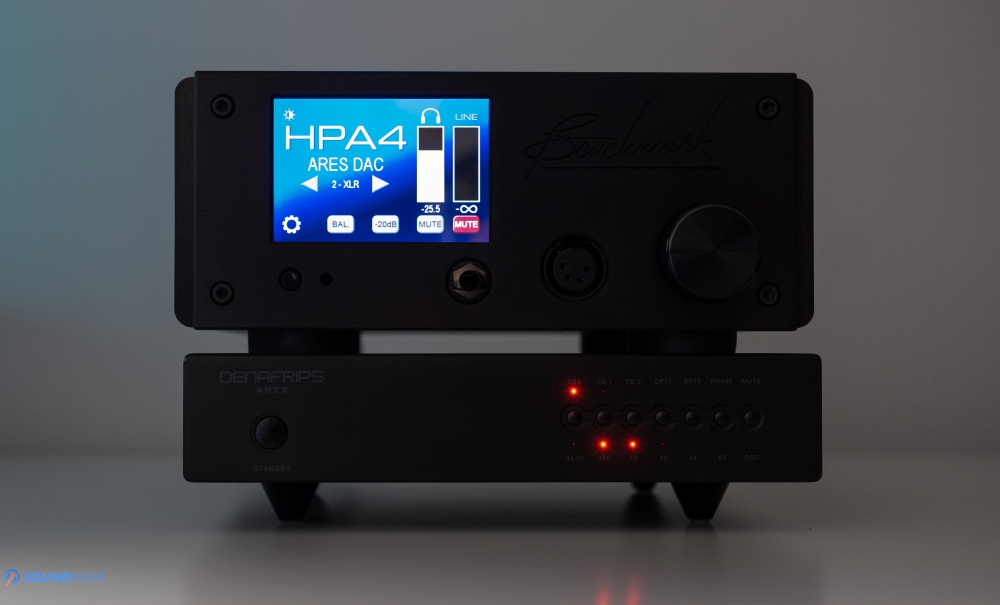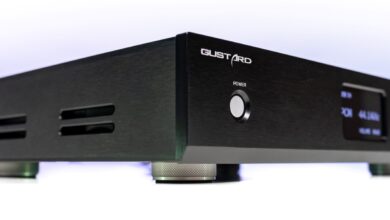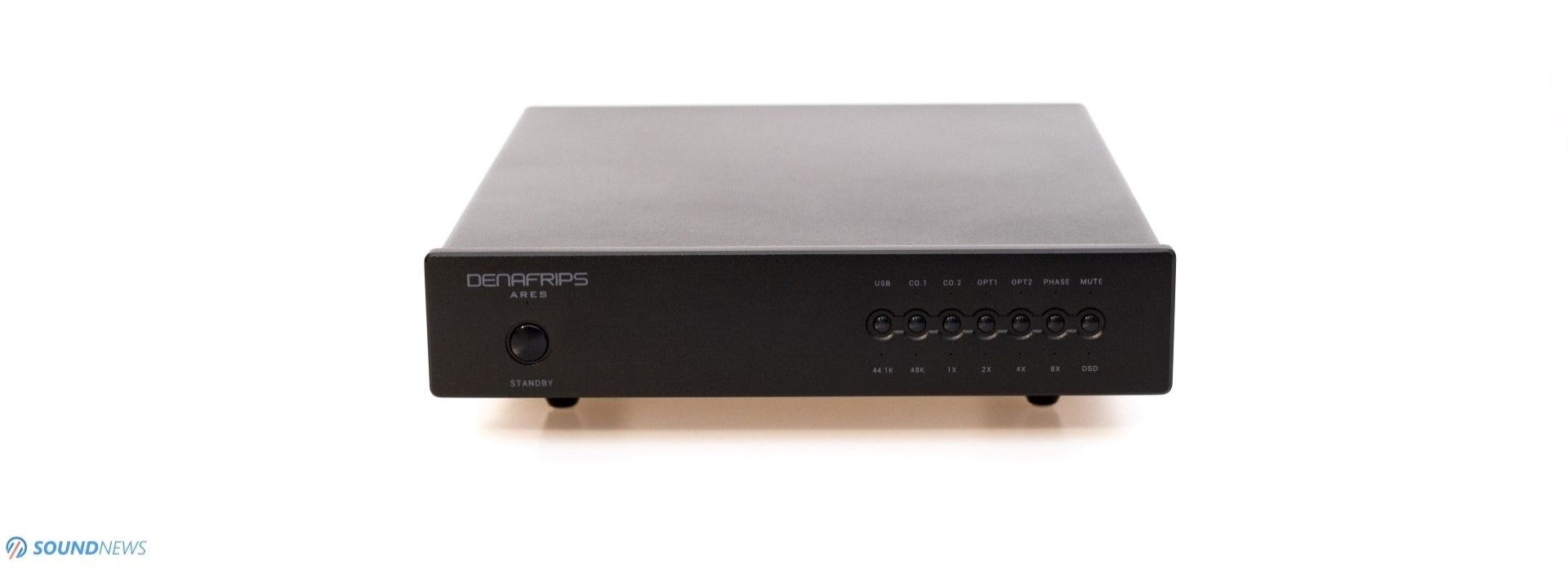
My video review:
Converting vinyl lovers to digital music is like converting vegetarians, that will most likely never happen. Well, except if a digital source is not sounding “digital” anymore. That was the basic idea behind R-2R Ladder DACs that are doing things differently compared to Delta-Sigma modulators found in 99% of digital-to-analog converters of today. Your smartphone, TV, PC/Laptop are having a delta-sigma DAC inside, even majority of commercial DACs are based on this design. They are easier to implement, are much smaller, they consume less power and are much more affordable.
Oversampling DACs that use delta-sigma modulation use a pulse density conversion technique with oversampling. Speeds of greater than 100 thousand samples per second (for example, 192 kHz) and resolutions of 32 bits are attainable with delta-sigma DACs.
A R-2R resistor Ladder DAC is a binary-weighted DAC that uses a repeating cascaded structure of resistor values R and 2R. This improves the precision due to the relative ease of producing equal valued-matched resistors. However, the performance of R-2R ladder DACs is relying a lot on the accuracy of the resistors, the higher the accuracy – the cleaner the sound will be.
The R-2R DAC that I will discussing today is called Denafrips Ares that uses a 20-bit R-2R Ladder for PCM material (up to 24-bit, 384 kHz) add another 6 bits of resolution using 32 steps FIR Filters for DSD material. Ares is relying on hundreds of 0.01% precision resistors.
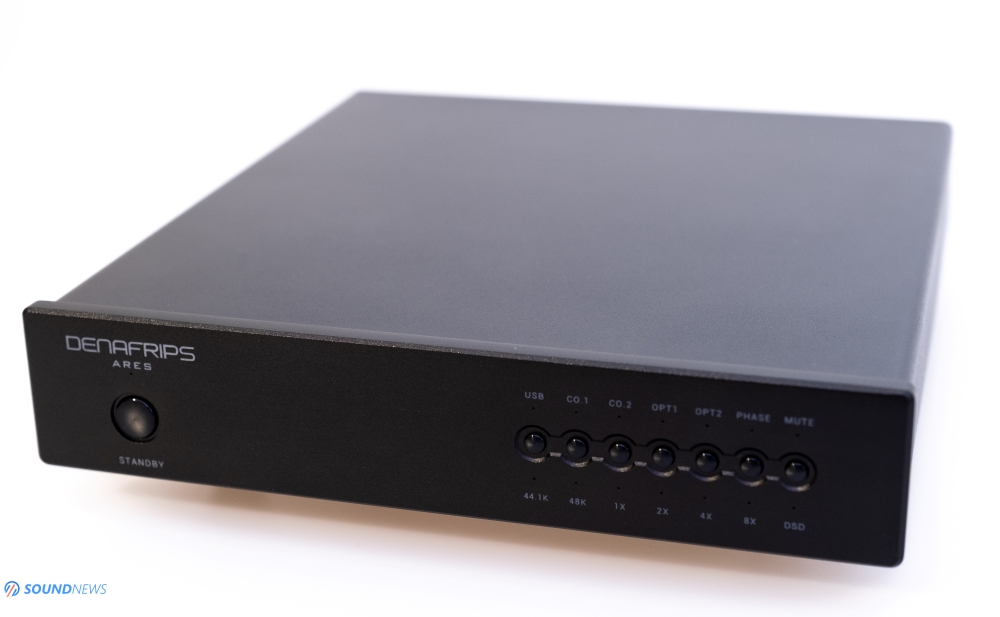
Package Contents
Unboxing experience is pretty good. The unit came double boxed with lots of foam inside for extra protection. Inside you will find: the DAC itself, a power cable, a quality certificate, a warranty card and that is basically it. Unfortunately, it doesn’t come with a remote, but truth to be told it doesn’t need one as the output is fixed so it can’t be used as a digital preamp.
Design & Build Quality
Fit and finish is just incredible! To me Ares looks like a 2K+ unit on the outside and on the inside. Its size is identical to that of Benchmark DAC3 and Mytek Brooklyn DAC+ and actually has the same footprint with the Benchmark HPA4 headphone amp, they look stunning stacked together.
It might look small but it is actually among the heaviest DAC units of this size, it has a weight of 3.5 Kg. Underneath it 4 tall rubber feet can be spotted with soft silicone tips, they should absorb a lot of micro-vibrations and they should let the air cool it down properly. The case is built like a tank, with a thick 5mm front panel. I think it looks really good, and simple as a metal brick. It doesn’t have a display, just buttons and LEDs that are showing important information.
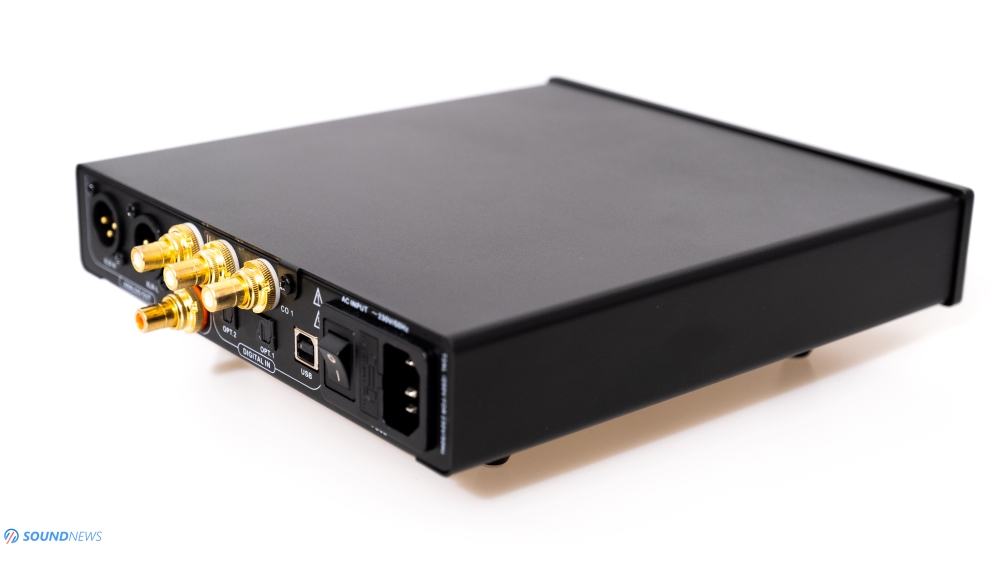
Front panel & Inputs & Outputs
On the front panel you will find a big stand-by on/off button, select your desired digital input with the next 5 buttons, another one for normal or inverted phase and a mute button. The LEDs on the front are barely visible when engaged, even in the evening. I know few people that love dimming their LEDs when listening, Ares is doing that by default.
Moving to the back panel, first of all I really appreciate the high-quality RCA connectors, they look and feel premium to me. Ares is really simple on the back as it has five digital inputs – USB type B, two coaxial and two optical inputs, and has two analog outputs – a XLR balanced and a single ended RCA out.
Both analog outputs don’t have a volume control, it means Ares is a pure DAC and doesn’t have preamp functionality. The RCA out will provide a clean 2.2 Vrms of power and XLR out 4.4 Vrms of power. Since Ares doesn’t have any volume control the output signal is as pure as it can be with a shorter and cleaner signal path. Ares is based on a single winding toroidal transformer, it means the power AC inlet is not switchable, it is either a 110 VAC unit or a 230 VAC unit.
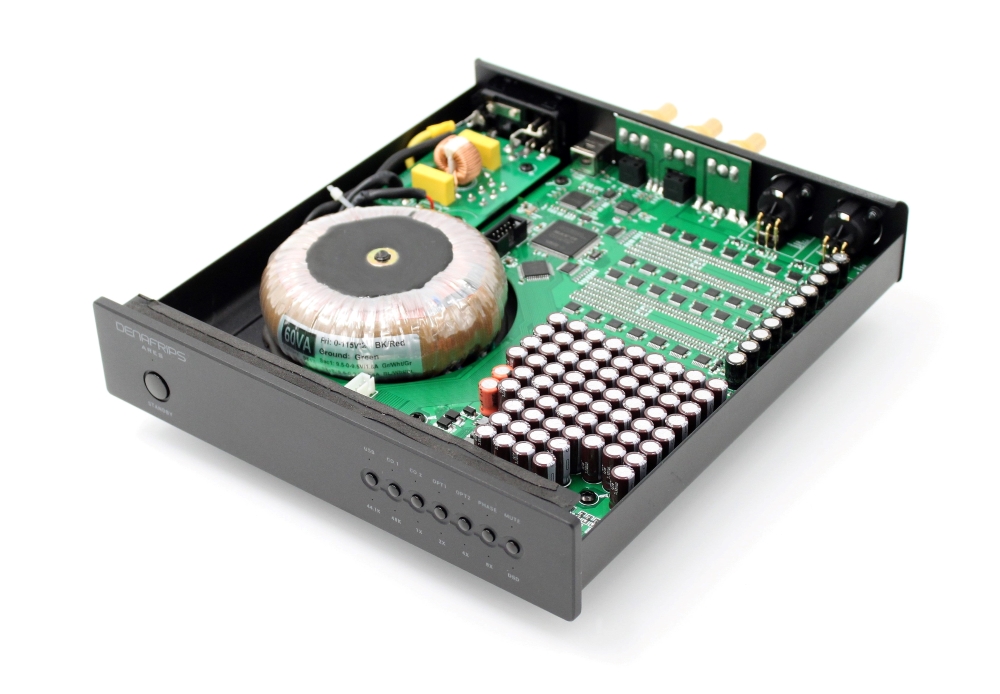
Under the hood
The moment I opened the case to have a peak inside was the moment my jaw hit the floor! Just look at it, how perfectly aligned is everything inside including the high precision resistors.
I’m really happy to find only audio-grade electrolytic capacitors like Elna Silmic 2 and United Chemi-Con KMG. Everything looks really well put together. The big Precision Audio Transformer is a 60VA one and since Ares is consuming less than 20VA (20W), it means a lot of room is left for the transformer to breathe and bring up those juicy dynamic swings when needed. I spotted the AK4118 ultra-low jitter digital receiver and few additional chips that I am not really sure what they do.
The hundreds of 0.01% precision resistors are actually making the ladder DAC work, all those together are making the DAC sing. This isn’t a delta-sigma DAC unit, so it doesn’t have commercial DAC chips inside like ESS Sabre, AKM, Wolfson, Ti BB PCM and so on. Ares employs a true balanced R-2R DAC design. So, each channel is decoded by 4 sets of R-2R network. This design has tiny linearity errors, high decoding speed, low digital noise, not only it ensures a low distortion audio signal, but also ensures a very low background noise; allowing the listener to enjoy the true music with a dark background.
The USB input is based on the high-performance Amanero Combo 384 together with 2 low phase noise TCXO oscillators. In my opinion this is the best digital input Ares is having as only via USB it will decode DSD2X, DSD4X and 24-bit 384 kHz PCM material.
From the DAC offerings of the Denafrips, only Ares is an oversampling only DAC, the higher priced Pontus, Venus and Terminator have a non-oversampling (NOS) mode as well.
Ok everyone, I think it is time to have a serious listen.
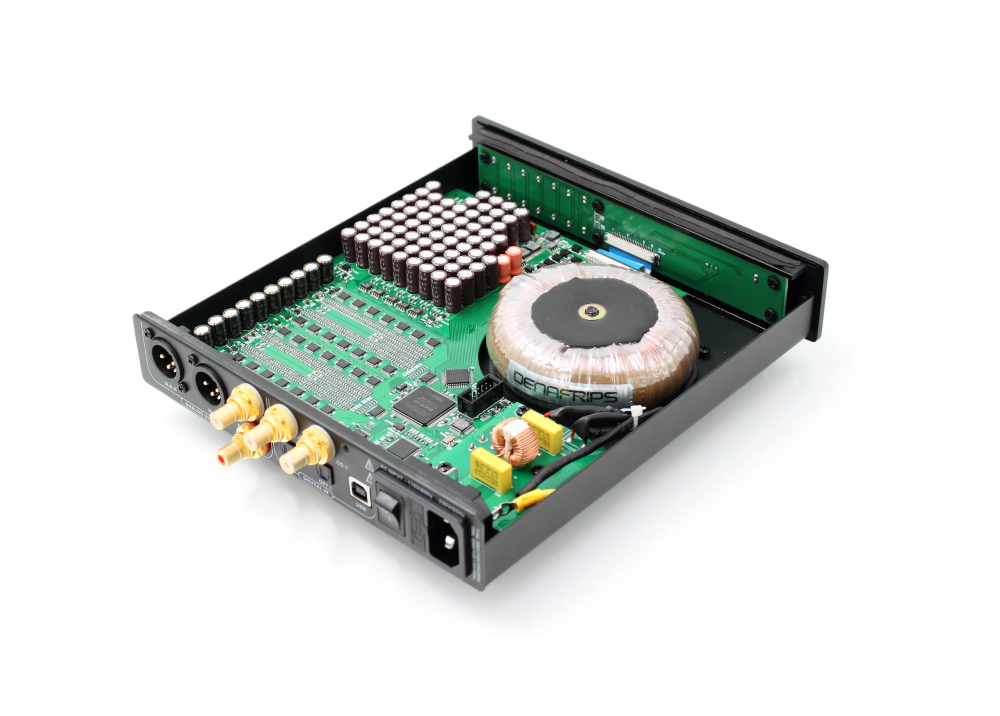
Sound Performance
Since Ares has the same foot print with the Benchmark HPA4 I decided to use it not only with my KEF LS50W speakers, but with headphones as well. It is great that HPA4 has 2 balanced XLR inputs, comparing Ares to another balanced DAC is super easy by just pressing a button on the HPA4 remote, love this feature a lot.
I am listening to it for quite some time and as the manufacturer recommended, I left it powered-on all of this time, mostly to burn-in all those capacitors inside, I listened to it every day for two weeks.
Making a review for a standard delta-sigma DAC is quite easy since I am picking its sound signature quite fast. It is not as easy with a R-2R ladder DAC like this one, as it doesn’t sound as a Digital-to-Analog Converter at all, it sounds like going to a rock gig or to a cozy live jazz performance. It doesn’t sound like something is being converted…I know this sounds stupid because it is actually converting zeroes and ones into sound waves but it is doing that differently, in an effortless and natural way. It is quite hard finding the right words really. It is not overly smooth or warm, not at all. Would you tell going at a live concert that music is played smooth or warm? Not really, it just sounds right and life-like and that is exactly how Ares is playing all my music files.
I will not split my listening tests into how it sounded in a headphone-based system or in a speaker-based system because it sounded the same in all of those setups so I will just continue describing what I heard.
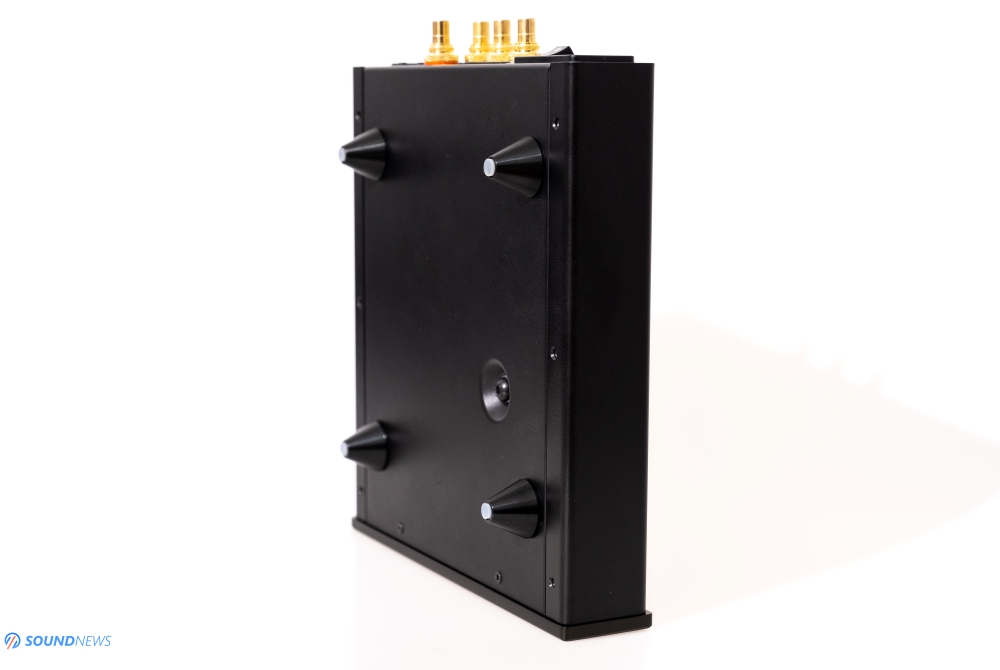
There was a time when I was really into super musical, super smooth musical performances, about 10 years ago I was using a R-2R ladder DAC with a tube output stage and with tube-based amps – that was the most musical and the most warm and smooth musical presentations I ever heard. Time passed, it made me realize I was losing a lot of micro-detail information with that setup, I lost a lot of transparency and cleanness in exchange for that uber smooth and musical presentation. I moved to solid state electronics and never looked back.
Denafrips Ares reminds me a lot of that former setup of mine, without the obvious flaws my system had: lack of transparency, of detail retrieval and of quick transient response.
Ares sounds like it is borrowing the good parts from the R2R ladder DACs and it is combining that with the quickness and resolution of the delta-sigma DACs. I am reminding you that Ares is working only in oversampling mode, so it indeed borrows some tech from the delta-sigma DACs.
Overall, Ares will never sound overly smooth to a point of being boring and will not hide all those tiny micro-details that sometimes are sending shivers down my spine or makes me turn my head.
Normally, I would tell you about the price at the end of the article but I just can’t help myself. At €600 or $670 this incredible unit is a steal! I am shocked of how good it actually sounds at this price point. It actually sounds so good that it will embarrass few ~$2000 USD DACs that I reviewed recently and I will just compare it later with the flagship $3000 Matrix Audio Element X.
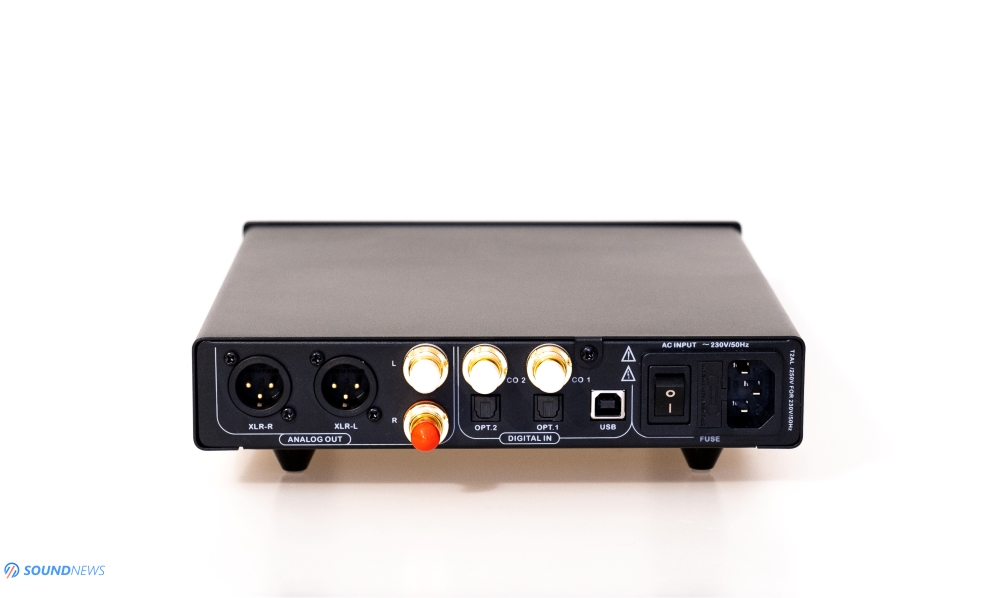
There are few things that impressed me from the start, one of that was layering of every sound in a recording. Few Delta-Sigma DACs that I tested had an up-front sound, almost 2D with close to zero layering. Those DACs might sound clear but they lose a lot of ground when it comes to complex passages with tens of musical instruments and voices around the listener. The mush effect and muddiness will never be present on the Ares as it has an enveloping open sound that offers layers and layers of information. All those sounds are not coming towards me like a blob of sounds but in an open-wide manner, every sound has its own layer and spot in the 3D field.
Of course, it all depends on the music you are listening to, putting some fast electronica and loud rock will not reveal the same layering but you still got to experience the rightness I was writing about.
With all that layering comes an open-wide soundstage. I actually do believe for a DAC to achieve the widest possible soundstage the power delivery should be top-notch and I mean toroidal transformer based. My 4-way DAC comparison article revealed that only two DACs that had the best power filtering sounded the widest and airiest of all, Ares is having a huge toroidal transformer inside so I’m again experiencing this out of head performance. Everything floats around me, even with headphones on my head I am picking sounds from the air, I don’t need to stress myself too much to feel this airiness and open wide-soundstage. At this department Ares has the same open-wide nature as the Matrix Audio X-Sabre Pro and Element X and for that fact alone Ares is a serious no-BS DAC.
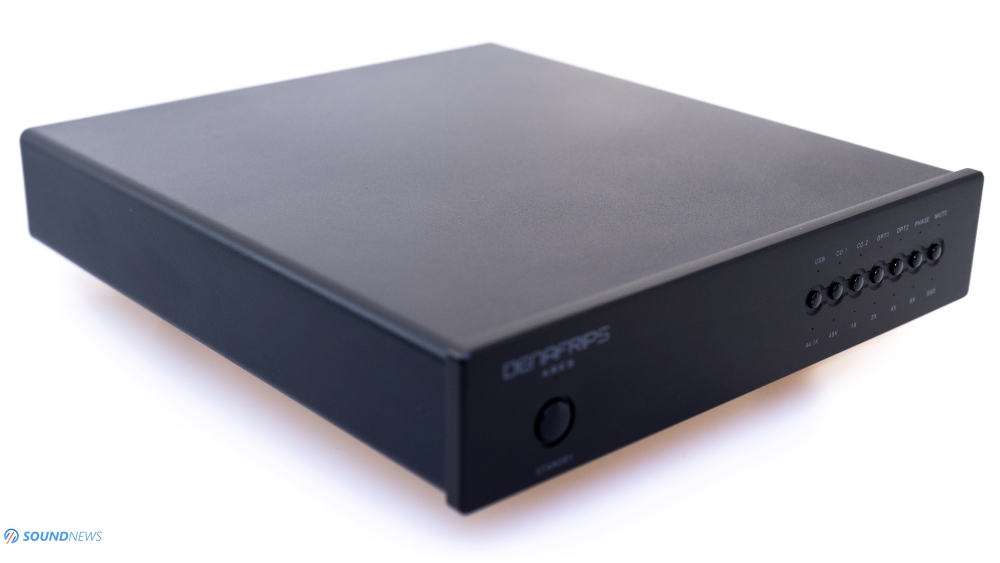
In the delta-sigma DAC realm, there were only very few units that had indeed a great liquidity, like everything is going smooth, unrestrained and effortless. There are only few examples that I can give, Ares is having gobs of liquidity and naturalness. The liquidity level is so high, that I checked again if there is a vacuum-tube hidden somewhere inside the case that is throwing all those jokes on me. You just start listening to music and don’t feel like stopping at all, I call it digital vinyl.
Now, you might think that Ares is boosting some of the lows or the midrange and is making all this magic happening, you might think it sounds warm or dark and emphasizes something for this natural and liquid presentation. You would be totally wrong about that. Ares is straight as a line and doesn’t boost any of the frequency area, it terms of frequency response it actually sounds like the best ESS 9038 PRO implementation I have tested. Nothing particularly stands out; you have your deep sub-bass and up to the sub-sonic treble you have everything in between. Ares is not warm or dark sounding and will not boost anything in its way.
I presume the ladder network from the DAC circuitry is making that happening.
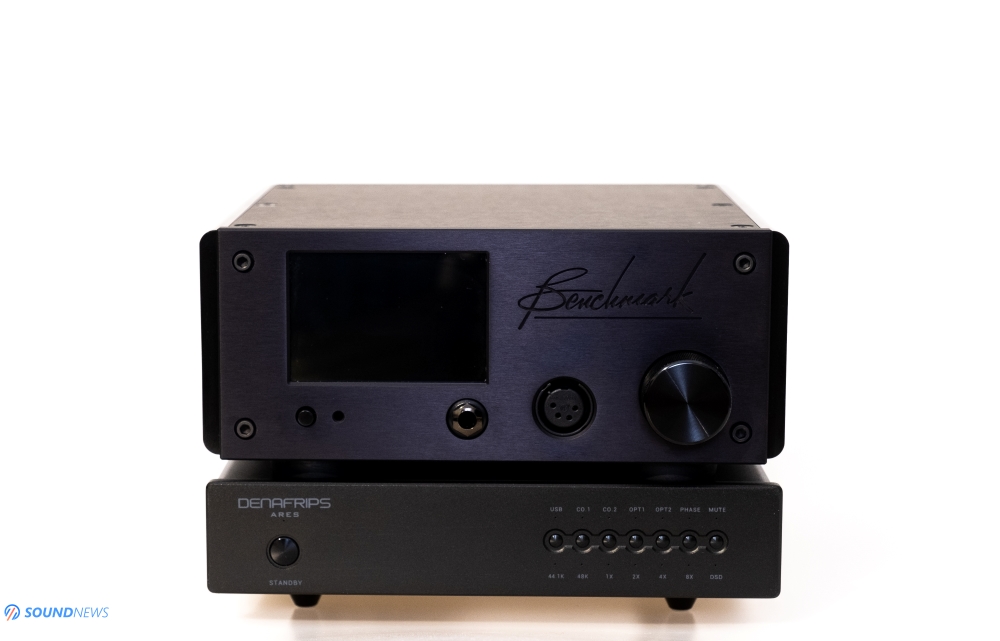
When Alvin from the vinshineaudio.com (the sole worldwide distributor of Denafrips) told me it has a black background he wasn’t joking around. Pausing the music at any passage will reveal a complete silence and playing some really complex passages again revealed some impressive dynamic swings from low to high intensity sounds with a dark and silent background. In this respect, Ares performs admirable and will filter a lot of the unwanted mains noise.
Having a noiseless background opens the window to the tiny details, I can definitely say Ares has a very good detail-retrieval, under $1000 price point that is some impressive detail retrieval. I did hear a better detail-retrieval with other DACs but not at this price.
An open-wide soundstage that has impressive layering will of course lead to some impressive pin-point imagining and depth.
On a normal delta-sigma DAC you need to close your eyes to appreciate the distance between yourself and a said musical note, with Ares you don’t even need to close your eyes, you just pick-up any sound you want with the power of your mind. Pin-point imaging is good and with the right recordings will put a smile of your face.
There is a single thing that is bothering me a bit and that is the sharpness of few musical notes, especially in the upper-midrange and treble every note is a bit sharper with a delta-sigma DAC and not overly sharp with the Ares, can’t explain why.
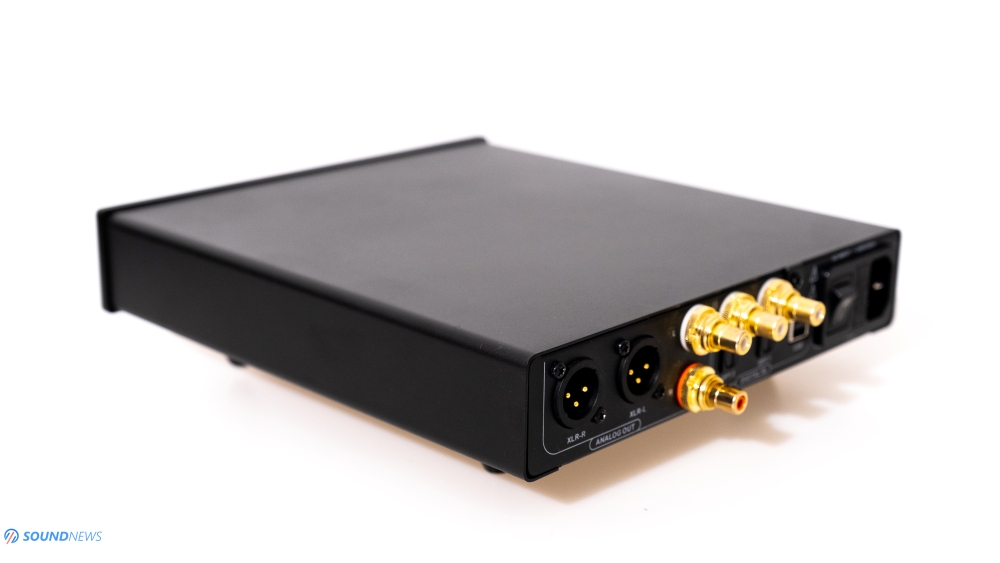
Listening to Eluveitie – Evocation I (The Arcane Dominion) performed in Gaulish is a special experience for me. They use few musical instruments that were forgotten by the winds of time. I know this recording very well as I am listening to it at least once per month, the harp and the hurdy-gurdy have a special vibration and texture. On the Ares this recording is engaging and natural but it loses a bit of technicality as the leading edge of every note is not super sharp or outlined, in this respect the $3000 Matrix Element X is faster, more detailed and offers a clearer view over the big picture.
Another small detail that was not top-notch as was the rest of the performance is the transient response and slam. Ares has a good impactful performance, but it is not lightning quick and will not strike like a thunder. This is my biggest audiophile fetish: Speed and impact and Ares is doing those fine but not mighty fine.
Hifiman Arya can be sometimes a little edgy sounding on delta-sigma DACs losing just a bit of soul and involvement. Listening to the same performance on the Ares, Arya becomes much less edgy to a point it is never bothers me. I get it why people are loving their R-2R DACs as they have a different approach to music playback. I used it in three different setups and always sounded good to me, I think system matching becomes a much lesser issue with Ares added to the chain.
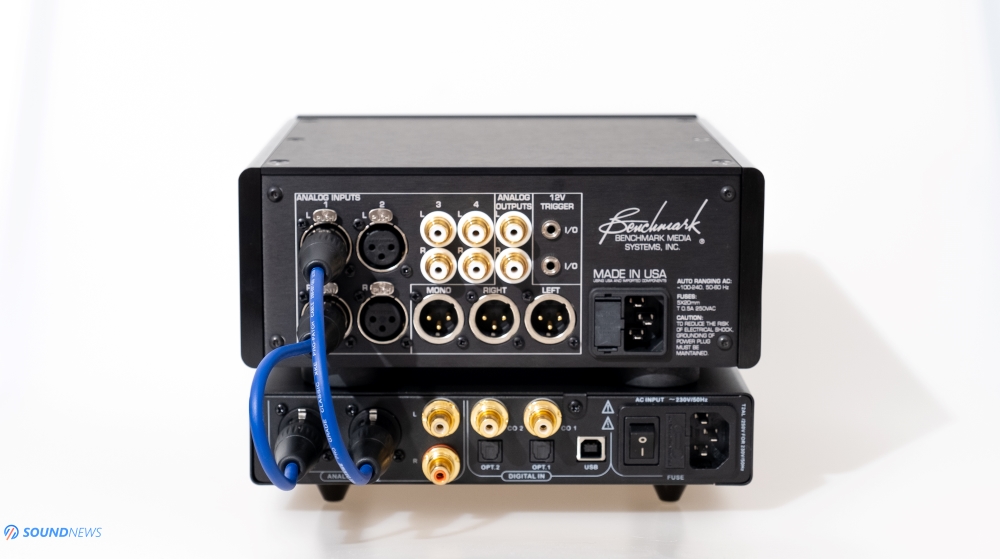
Comparisons
Denafrips Ares (~$670) VS Matrix Audio Element X ($3000)
Both are high quality made audio components. Element X is wider and deeper since besides the DAC part, it also houses a headphone amp/preamp, a streamer and an internal player. Element X is much more advanced in terms of features, inputs and outputs but it is also 4.5 time the price of Ares.
Since both have a 4.4 Vrms of power on the XLR balanced out I just used two pairs of QED Reference interconnects and with a press of a button I could swap input 1 or 2 on the Benchmark HPA4.
It is actually quite interesting that I decided comparing the two. The more I listen to them the more I realize how different Element X is sounding from all of ESS Sabre based DACs I’ve heard in the past; it is much more musical and easy going compared to others. Element X almost matches the Ares in terms of musicality, liquidity and naturalness. I said almost because as much as I love the Element X it loses in terms of liquidity and smoothness.
In terms of detail retrieval and texture Element X is better, there is no contest, it has a sharper outline, more micro-detail information. It is also faster sounding and has a better slam.
The interesting part is soundstage size and layering. With my eyes closed they are sounding the same in terms of soundstage, even layering is the same. Ares holds the line impressively well, even being 4.5 times cheaper it doesn’t sound bad at all.
If I am listening to lots of electronica, Element X will always win that battle as it has a better speed and impact, a deeper sub-bass and overall sounds more technical and engaging.
If I am switching to some Pink Martini then things are having a 180-degree turn-around, with Ares I want to clap my fingers on this kind of music, it puts you in a relaxed state of mind, grab a cigar, a glass of whisky and have a nice evening.
With Element X it is like being on a roller-coaster, you are always on the alert, what sound will hit you next and from what angle. Yes, it is more technical, yes, it is more detailed but it is not as relaxed in the long run.
Switching to some art/psychedelic rock of Tool – Sober / Parabola / Vicarious making a choice between the two is much harder because with Ares you hear this boldness, fullness, a heavy weight presentation, it just envelops you no matter how many times you listen to it.
With Element X everything is toned down a bit and replaced with fast transients and speedy bass notes. At the end of the day my fetish and my subjectivity play a big role: my name is Sandu and I am a transient response addict, I am picking Element X, but it should not come as a surprise as it is much more expensive.
However, please take into consideration that I decided comparing the two, it speaks by itself how high I think of Ares.
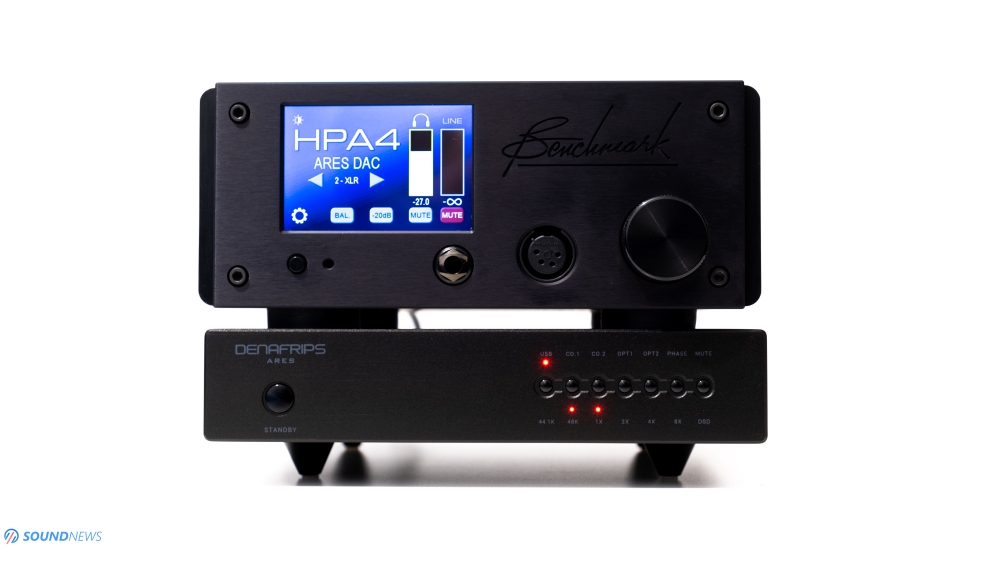
Conclusion
Build quality wise there is nothing to complain about, it is sturdy as a tank and built to last. Maybe a silver anodized color option should also be offered in the future.
I did enjoy my time with Denafrips Ares as it shown me the darker side of the moon. Not all digital sources are sounding the same, some are literally on the opposite side of things. If you can’t stand harsh and edgy sounding audio sources you got to try a R-2R ladder DAC.
Love your LPs and hate your CDs? I hear you loud and clear and I think this one might change your opinion on digital sources.
Denafrips Ares can be purchased only from Vinshine Audio at about $670 or €600, and if you do, please say Hi to Alvin from me.
PROS:
- Sturdy build quality with the simplest design
- Wide selection of digital inputs, has a truly balanced output as well
- Short signal path with no volume control leads to a high transparency
- Sounds natural, has great liquidity with an amazing tonal balance
- Layered, open wide and deep sounding performance
- Precise pin-point imaging
- Among the most enveloping and relaxing sound performance I experienced of late
- A silent and black background
- Punches way above its price point
CONS:
- Not the most detailed sound
- Not the fastest or punchiest sound
ASSOCIATED EQUIPMENT:
- DACs: Denafrips Ares, Matrix Audio Element X, KECES S3, Burson Swing
- Headphone amps: Benchmark HPA4, Aune S7 PRO, Erzetich Bacillus, Headamp Gilmore Lite Mk2
- IEMs: FiiO FA7, IKKO OH1
- Full-sized headphones: Sennheiser HD820, Sennheiser HD660S, Hifiman Arya, Quad ERA-1, OLLO Audio S4
- Loudspeakers: KEF LS50W
- Interconnects: QED Reference XLR (x2), Aune AL3 XLR
- Power Cables: Isotek EVO3 Premier (x2)
- Balanced Power Conditioners: PLiXiR Elite BAC400, KECES BP-600
